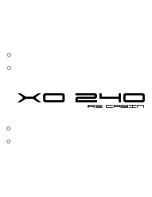
2020 Malibu Boats LLC • Owner’s Manual • Page 33
Overtaking
The boat that is overtaking one ahead of it is the
burdened boat and must make any adjustments necessary
to keep out of the way of the privileged boat, until the
burdened boat is well ahead and clear of the vessel being
overtaken.
The General Prudential Rule
The General Prudential Rule regarding right of way,
is that if a collision appears unavoidable, neither boat has right of way. As prescribed in the Rules of the Road,
both boats must act to avoid collision.
Rule 2 in the International Rules says, “In construing and complying with these Rules due regard shall be
had to all dangers of navigation and collision and to any special circumstances, including the limitations
of the vessels involved, which may make a departure from these Rules necessary to avoid immediate
danger.”
Other Rules of the Road
When navigating in narrow channels, you should keep to the right when it is safe and practical to do so. If the
operator of a power-driven vessel is preparing to go around a bend that may obstruct the view of other water
vessels, the operator should sound a prolonged blast on the whistle or horn—four to six seconds.
If another vessel is around the bend, it too should sound the whistle or horn. Even if no reply is heard,
however, the vessel should still proceed around the bend with caution.
If you navigate these type of waters, you should carry a portable air horn, which are available from local
marine supply stores.
Aids to Navigation
Learn to recognize the different buoys and day markers; they are the
signposts of the waterways. The United States Aids to Navigation System
(USATONS) is the primary marking system used on inland water, coastal waters
and rivers in the United States. This system is maintained by the U.S. Coast
Guard (USCG).
There are two primary marking systems in use in the U.S.: the Uniform State
Waterway Marking System (USWMS), used on inland waters and maintained by
each state, and the Federal Waterway Marking System (FWMS), used on coastal
waters and rivers and maintained by the USCG. In addition, the FWMS has two
modified systems: the Western River Buoyage, and the Intracoastal Waterway Buoyage. Be sure to check with
local authorities on the buoyage system in use in your boating region.
The type of hazard/warning buoys and markers depends on the area of jurisdiction. Check with local boating
authorities.
USWMS System
In the USWMS Lateral System, well-defined channels are marked with red and black buoys, and the boat
should pass between them.
Spherical Safe Water Marker
Summary of Contents for 21 VLX
Page 4: ......
Page 16: ...Safety ...
Page 17: ......
Page 42: ...2020 Malibu Boats LLC Owner s Manual Page 28 Wakesetter Label Locations ...
Page 88: ...Dashes and Video Screens ...
Page 89: ......
Page 134: ...Engine and ...
Page 135: ...Drive Train ...
Page 156: ...How It Works ...
Page 157: ......
Page 195: ...2020 Malibu Boats LLC Owner s Manual Page 181 ...
Page 196: ...Trailers ...
Page 197: ......
Page 224: ...2020 Malibu Boats LLC Owner s Manual Page 210 ...
Page 226: ......
Page 227: ...Get Ready ...
Page 238: ...Care and ...
Page 239: ...Maintenance ...
Page 278: ...Warranty ...
Page 279: ......
Page 301: ...2020 Malibu Boats LLC Owner s Manual Page 287 Date Date Date Date Date Date Date Date ...
















































